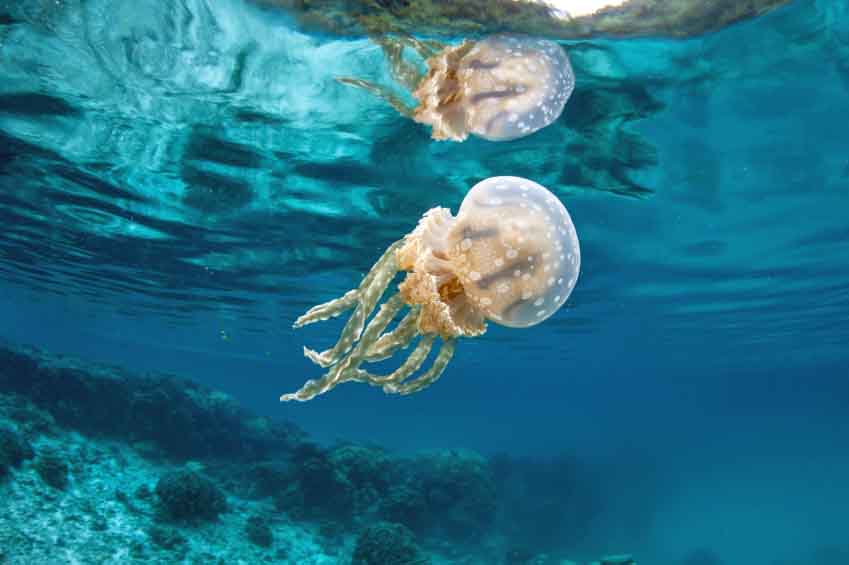Jellyfish Fascination
Jellyfish have fascinated people for centuries. These ocean life, sea creatures gracefully floating through the waters in a peaceful and relaxing motion, which is deceptive since their sting can be incredibly painful or even kill. Perhaps more shocking is that they have no heart or brain in their bodies and are incredibly high in protein.
Jellyfish Have a Special Swim Style
Looking at them, you might be wondering how they move as a swim stroke doesn’t seem likely, since they don’t have fins. The jellies moves by expanding and contracting their bodies that have a bell shape and then pushing water behind them. As they do this, there are two vortex rings that are formed using their muscles. Thanks to the elasticity of their mesoglea, the expansion and relaxation provide the power that propels them through the water. This is similar to the kicking motion which a swimmer can do as they push themselves through the water.
When it isn’t propelling itself through the water, the jelly fish will coast on the currents of the water without a swim stroke of any kind. Humans swim in a similar fashion when they are on their backs and allow the current of the water to move them along.

Many Different Kinds
There is more than just one kind of jelly fish you will encounter in the water. This depends on where you are swimming. Take the English Channel jellies for example. Plenty of people attempt to swim this and need a bodysuit to protect them from this dangerous species. The species they may encounter include:
- Barrel
- Blue
- Compass
- Lions Mane
- Moon
- Mauve
- Portuguese Man of War
- Velella Spirans
In the Caribbean, you will also find a Jellyfish. The tiny thimble jelly fish is the most commonly encountered species in these waters. Only a half inch long and an inch in diameter, this fish eats the larvae of barnacles and crustacean plankton in the water. When a creature comes in contact with their nematocysts stingers, a toxin enters the body and begins to paralyze and kill.
The Oceans are Full of Them
Most species of jelly fish are found in salt waters and large bodies of water like the ocean. However, some fresh water species can be found in a few of the world’s largest likes like Africa lake Bikal in Russia. Most species also go no deeper than 200 ft. since that is the common depth of most of their food. While most species of jelly fish are naturally clear, most have pigments that appear due to the foods that they eat. However, there are some that are naturally red, green, yellow and blue in nature.
There is no denying that jellyfish are some of the most incredible members of the ocean life family. With more than 200 species and 70 of those being deadly enough to kill, it is perhaps best to study their movement and swim stroke from a safe distance.
Today’s Daily Swimming Workout
Warm-Up: 4 X 150, one each stroke, each 150 as 50 kick, 50 pull, 50 swim; 300 Individual Medley as 25 swim, 25 kick, 25 swim each stroke
Pull with Hand paddles: 2 X 400 freestyle
4 X 50 butterfly swim or drill
8 X 75 backstroke
10 X 25 breaststroke
4 X 100 Individual Medley
Warm-down: 200 super slow tai-chi style freestyle
Total: 3350 meters or yards
back to the top of jellyfish page








